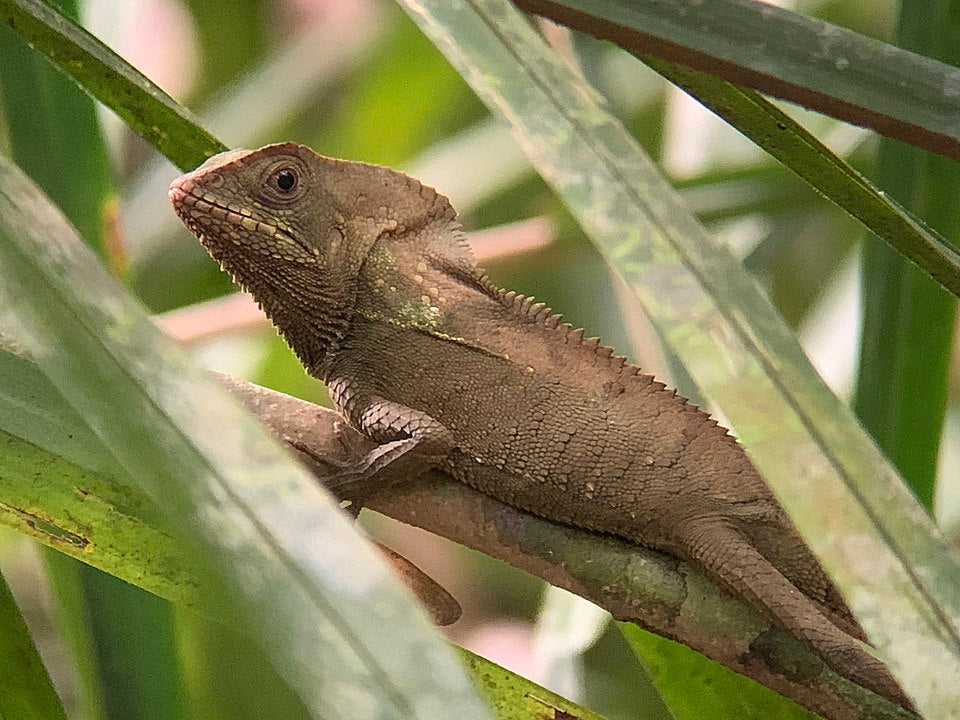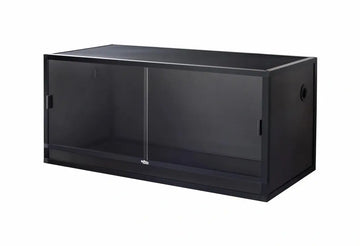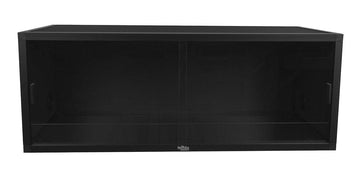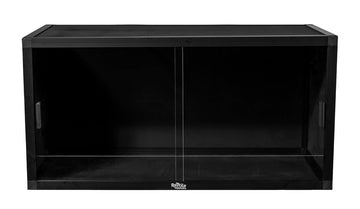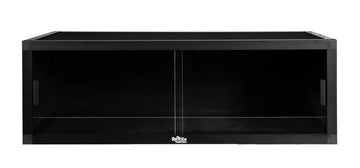Helmeted iguanas (Corytophanes cristatus) are 14” long, diurnal, arboreal lizards native to Central America. They prefer a tropical forest habitat and primarily occupy the forest’s understory.
Helmeted iguanas can be identified by their large, short head with large eyes; prominent “eyebrow” ridges, casque, beardlike throat flap, narrow body, and long toes. Most of their length is composed of tail. Color and pattern vary widely: the base color may be pale yellow, rusty orange/red, olive, green, or brown. Pattern may be absent or there may be a subtle leaflike pattern, or a striking pattern of irregular black stripes. The tail may or may not have dark banding.
Helmeted iguanas are not particularly common in the pet trade and they don’t make good pets for people looking for something that will tolerate frequent handling. However, properly housed, they can make an impressive display species.
Minimum terrarium size for helmeted iguanas
The absolute minimum enclosure size for a single helmeted iguana is 18”L x 18”W x 36”H. Helmeted iguanas may seem like small lizards, and overall fairly sedate by nature, but they still need plenty of space to allow for freedom of choice in thermoregulating, climbing, and hiding. Of course, if you can manage it, larger is always better — particularly wider!
Housing multiple helmeted iguanas in the same enclosure is not recommended.
Do helmeted iguanas need UVB?
Yes! Helmeted iguanas require UVB lighting for their survival. UVB lighting helps provide a clear day/night cycle, provides all of the vitamin D that your pet needs, strengthens the immune system, facilitates better digestion, and other benefits.
Here are the best UVB bulbs for helmeted iguanas housed in a 36” tall enclosure:
- Arcadia ShadeDweller Pro UVB kit
- Zoo Med T8 Reptisun 10.0
For best results, house your UVB bulb in a reflective fixture, preferably Arcadia or Vivarium Electronics brand. Position the lamp on the same side of the terrarium as the heat lamp. If the UVB is mounted over mesh, place the basking branch so the lizard’s back is 6-8” below the lamp. If the UVB is mounted inside the enclosure, place the basking branch so the lizard’s back is 8-10” below the lamp.
They are also likely to benefit from plant grow lights as part of their environment as well. Add a ~6500K fluorescent grow lamp to provide extra illumination, as well as help any live plants in the enclosure to thrive.
Stimulate seasonal hormonal cycling by leaving lights on for 13 hours/day during summer and 11 hours/day during winter.
Best temperature for helmeted iguanas
Helmeted iguanas need a basking area temperature around 90°F, and around 80°F on the floor, as measured by digital probe thermometers. Nighttime temps should not get lower than 70°F.
Provide heat for your pet with a low-wattage white heat bulb mounted in a hood fixture and placed above the basking branch. Ceramic heat emitters (CHEs) are good for boosting nighttime temps as needed, but should not be used as a primary daytime heat source. Avoid colored bulbs, as they mess with your pet’s ability to accurately perceive its environment.
Best humidity levels for helmeted iguanas
Helmeted iguanas are a tropical species, so the humidity inside their enclosure should be fairly high: 60-70% during the day, and higher at night. Humidity should be measured via digital probe hygrometer, with the probe placed in the middle of the terrarium.
Increase humidity by misting your pet’s enclosure 2x/day with a pressure sprayer or automatic misting system. Mist first thing in the morning and then again at night. If you need more help maintaining humidity, install a cool mist humidifier connected to a humidistat to run during the night.
Best substrate for helmeted iguanas
Although helmeted iguanas spend most of their time either in the trees or in their pool, they do occasionally spend time at ground level. Providing a layer of naturalistic substrate (“bedding”) in the enclosure will help maintain correct humidity, cushion against falls, provide a digging medium, and also help make your enclosure more attractive!
We recommend the following substrates for helmeted iguanas:
- Zoo Med Eco Earth
- Zoo Med ReptiSoil
- Exo Terra Plantation Soil
- Zilla Jungle Mix
Layering clean, chemical-free leaf litter on top of the substrate can help with humidity as well as add enrichment value.
Substrate should be at least 4” deep and completely replaced every 3-4 months. Remove poop and urates daily, along with any contaminated substrate.
How to decorate a helmeted iguana terrarium
An empty enclosure makes for a bored lizard, reducing its quality of life. Keep your pet entertained and engaged with its environment with the strategic use of décor items that encourage it to exercise natural behaviors!
Since helmeted iguanas prefer to spend their time off the ground, at bare minimum you will need a couple of branches for them to hang out on and some foliage to hide in. Of course, more is always better — don’t be afraid to make full use of the available space!
All climbing branches should be securely anchored to prevent collapse.
What to feed to a helmeted iguana
Helmeted iguanas are insectivores, which means that they eat bugs. In the wild, they are large prey specialists, targeting primarily large, slow-moving insects, but they’re also known to ambush and eat smaller lizards.
Here’s a basic feeding schedule for your helmeted iguana. Offer as much food as the lizard will take in about 5 minutes.
- Juveniles — daily
- Adults — every other day
Feeder options for helmeted iguanas: discoids, dubias, earthworms, hornworms, silkworms, mealworms, superworms, feeder geckos
Provide as much dietary variety as you can manage for balanced nutrition!
Supplements
You will also need calcium and vitamin supplements to help keep your lizard healthy. We recommend Repashy Calcium Plus LoD, lightly dusted on all insects. It’s okay to occasionally skip a dusting.
Water
Of course, don’t forget a water bowl for your helmeted iguana to drink from! Although your pet will likely get most of its water from daily misting, your pet should always have access to a source of fresh water. Change the water daily and scrub the bowl with a reptile-safe disinfectant weekly, or whenever it becomes soiled.
How to handle your helmeted iguana
Reptiles generally don’t appreciate petting and handling in the same way that dogs and cats do. Regarding helmeted iguanas, they generally prefer to be left alone, to be admired from afar. However, it is possible to train them to accept food from feeding tweezers!
*This care sheet contains only very basic information. Although it’s a good introduction, please further your research with high-quality sources. The more you know, the better you will be able to care for your pet!
"Corytophanes cristatus 174580443" by Ashwin Srinivasan is licensed under CC BY 4.0.

